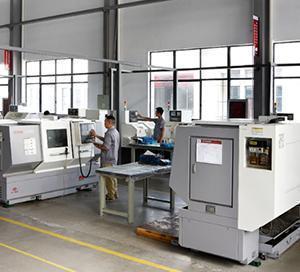Development of Magnets
Magnets are very common in daily life. In addition, thousands of years ago, Chinese laborers made compasses, one of the four inventions, based on the characteristics of magnets. Up to now, magnets are still very useful. They appear frequently, from various special electronic devices to typical teaching aids and toys. One example is a horseshoe-shaped iron, on which chunks of absorbent metal are stuck. This is a type of material known as ferromagnetic materials, which can be attracted by magnets, such as iron, cobalt and nickel.
From the development history of permanent magnetic materials, the carbon steel used at the end of the 19th century had a maximum magnetic energy product (BH)max (a physical quantity measuring the magnetic energy density stored in a permanent magnet) of less than 1 MGOe (Mega Gauss Oersted), while the NdFeB permanent magnetic materials currently produced in large quantities have a magnetic energy product of over 50 MGOe. Over this century, the remanence Br of the material has increased very little, and the improvement in magnetic energy product can be attributed to the improvement in coercivity Hc. The improvement in coercivity mainly benefits from the understanding of its nature, the discovery of high magnetic anisotropy compounds, and the progress in preparation technology.
In the early 20th century, people mainly used carbon steel, tungsten steel, chrome steel and cobalt steel as permanent magnetic materials. It was not until the late 1930s that AlNiCo permanent magnetic materials were successfully developed, making it possible for large-scale applications of permanent magnetic materials. In the 1950s, the appearance of ferrite not only reduced the cost of permanent magnets, but also expanded the application range of permanent magnetic materials to the high-frequency field. In the 1960s, the appearance of rare earth cobalt permanent magnets opened a new era for permanent magnet materials.
In 1967, Strnat and others from Dayton University in the United States successfully made SmCo5 permanent magnets using powder bonding, marking the advent of the rare earth permanent magnet era. So far, rare earth permanent magnets have gone through the first generation of SmCo5, the second generation of precipitation hardening type Sm2Co17, and developed to the third generation of NdFeB permanent magnetic materials. Currently, there are reports that nitrogen and iron are the main new types of permanent magnetic materials being developed, which represent the appearance of the fourth permanent magnet.
The bright surface magnets are AlNiCo magnets and nickel-plated neodymium iron boron magnets. The commonly used neodymium iron boron magnet is sintered by neodymium, iron and boron at high temperature. It is the strongest artificial magnet so far. If the core element of traditional magnetite is iron, the reason why neodymium iron boron magnets have such strong magnetic properties is that they have the role of rare earth neodymium metal.
Understanding whether AlNiCo Magnets are Strong Magnets
Many people do not have a deep understanding of AlNiCo magnets, and most people have not even heard of the name of AlNiCo magnets. Recently, magnet suppliers have received some questions about AlNiCo magnets, such as whether they are strong magnets and how they are used.
Are AlNiCo magnets strong magnets? Magnet suppliers believe that strictly speaking, they are not strong magnets. Currently, the strongest magnet on the market is neodymium iron boron magnets, followed by samarium cobalt magnets. Compared to these two magnets, the magnetic properties of AlNiCo magnets are not as strong, but their temperature resistance, corrosion resistance, and oxidation resistance all achieve the effect of strong magnets.
How are AlNiCo magnets currently used? At present, there are two manufacturing processes for AlNiCo magnets, casting and sintering. Based on past sales and delivery experience, magnet suppliers tell everyone that cast AlNiCo products are mainly used in automotive parts, instruments, acoustics, motors, teaching, and aerospace fields. Sintered AlNiCo is widely used in motors, instruments, communications, electromagnetic switches, and various sensors.
 English
English 日本語
日本語 한국어
한국어 français
français Deutsch
Deutsch Español
Español italiano
italiano русский
русский português
português العربية
العربية





